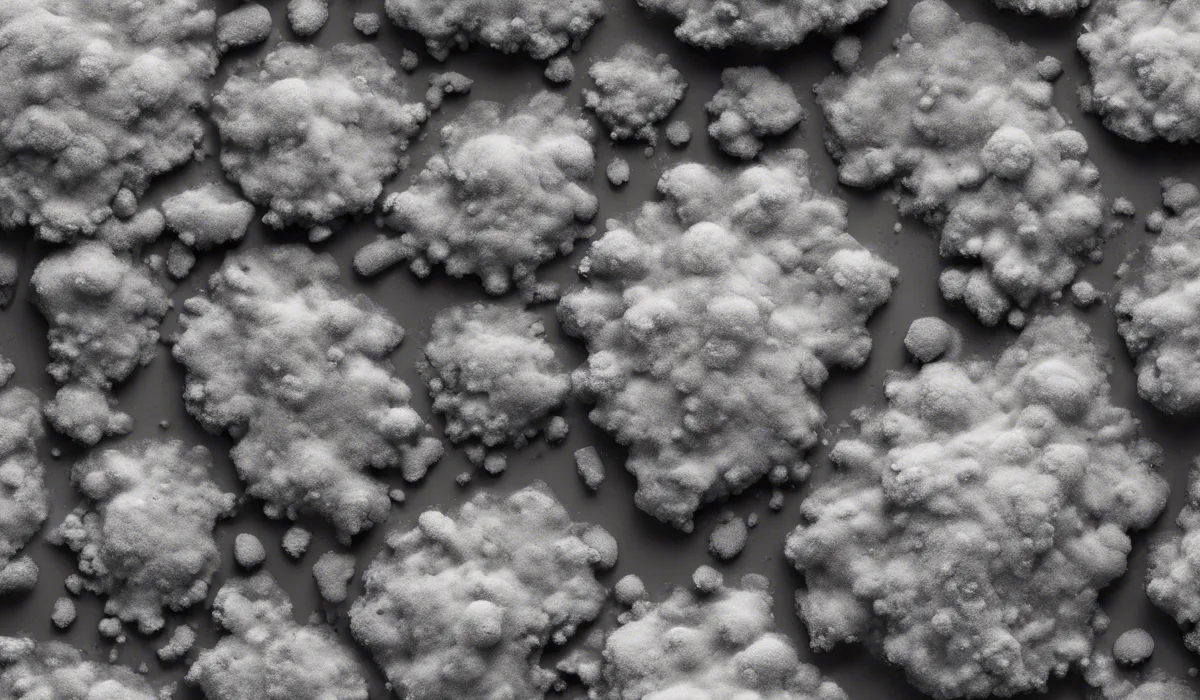Yes, mold can emit volatile organic compounds (VOCs). During its growth, mold releases microbial VOCs (mVOCs) as by-products, which are gases that can cause musty odors and may affect indoor air quality.
Understanding Mold and VOCs

Definition of Mold and Common Types Found in Homes
Mold is a type of fungus that grows in damp environments. It reproduces by releasing spores that can travel through the air.
In our homes, we often find mold in places like bathrooms, basements, and kitchens. Some common types of mold include Aspergillus, Cladosporium, and Stachybotrys, often known as black mold.
Explanation of VOCs and Their Sources
VOCs, or Volatile Organic Compounds, are chemicals that vaporize at room temperature.
These compounds are found in many household products like paints, cleaning supplies, and building materials. They can impact indoor air quality and pose health risks.
Relationship Between Mold Growth and VOC Production
As mold grows, it produces gases known as microbial VOCs or mVOCs. These are a specific kind of VOC that comes from the biological processes of mold.
They are part of the reason why mold can smell musty.
Conditions That Favor Mold Growth and VOC Emission
Mold loves moisture and warmth. When the humidity levels in our homes are high, and the temperature is just right, mold finds a perfect place to grow.
These conditions also increase the emission of VOCs, making them more likely to affect air quality.
Health Implications of Mold and VOC Exposure
Being around mold and VOCs can make people sick. Symptoms may include headaches, dizziness, allergic reactions, and respiratory issues.
Long-term exposure can lead to more serious health problems, especially for those with underlying conditions.
Mold-Related VOCs and Detection

Identification of Specific VOCs Produced by Mold
Molds produce specific types of VOCs called microbial VOCs or mVOCs. These include compounds like benzene and toluene, which have distinct smells and can indicate a mold problem in your home.
Describing the Scent and Characteristics of MVOCs
mVOCs often have a musty or earthy scent. This smell can be a tell-tale sign of mold growth in hidden areas, like behind walls or under carpets.
Methods and Tools for Detecting Mold-Related VOCs in the Environment
There are various methods to detect mVOCs such as using air quality monitors or VOC sensors. These tools can help identify the presence of mold by picking up on the unique gases it produces.
Challenges in Measuring and Quantifying Mold VOCs
Measuring mVOCs can be tricky because they are present in such low concentrations. It is also difficult to pinpoint the exact source of VOCs since many household items emit them.
Professional Assessment and Testing for Mold VOC Presence
If you suspect a mold issue, a professional assessment is the best way to confirm the presence of mVOCs.
Experts can conduct thorough testing to identify both the mold and the levels of VOCs in your home.
Prevention and Remediation of Mold VOCs

Strategies for Controlling Moisture and Humidity to Prevent Mold Growth
Keeping your home dry is key to preventing mold. Use dehumidifiers and air conditioners to maintain low humidity levels.
Fix leaks promptly, and keep areas like bathrooms well-ventilated to reduce moisture.
Best Practices for Mold Remediation to Reduce VOC Emission
If you find mold, it’s important to remove it correctly. This may involve cleaning with proper solutions or replacing affected materials.
Always wear protective gear and consider hiring a professional if the area is large.
Importance of Proper Ventilation in Minimizing VOC Concentration
Fresh air helps dilute VOCs. Make sure your home is well-ventilated, especially if you’re using products that emit VOCs.
Opening windows and using exhaust fans can help improve indoor air quality.
Selection of Materials and Products That Resist Mold Growth
When choosing building materials, furnishings, or paints, opt for those that are mold-resistant.
These products are less likely to support mold growth, which can help keep your home healthier.
Recommendations for Maintaining Indoor Air Quality
Regular cleaning and maintenance can help reduce mold and VOCs. Additionally, consider using air purifiers with HEPA filters to capture mold spores and activated carbon filters to absorb VOCs.
FAQs About Mold and VOCs
Does mold release VOCs into the environment?
Yes, mold can release volatile organic compounds (VOCs) into the environment, specifically microbial VOCs (mVOCs) as by-products of its growth.
Can mold VOCs affect indoor air quality?
Yes, mold VOCs can significantly affect indoor air quality by contributing to musty odors and potentially impacting health.
Are the VOCs emitted by mold harmful to humans?
mVOCs emitted by mold can be irritating to some individuals and may cause health effects, particularly in those with sensitivities or allergies.
What do mold VOCs smell like?
Mold VOCs often produce a musty, earthy odor, which is commonly associated with moldy environments.
How can I reduce VOCs from mold in my home?
To reduce VOCs from mold, you should address any moisture issues, clean or remove moldy materials, and ensure good ventilation in your home.
Final Thoughts
Mold indeed releases volatile organic compounds, known as microbial VOCs (mVOCs), which are by-products of its growth process.
These mVOCs are responsible for the musty odors commonly associated with mold and have the potential to compromise indoor air quality.
